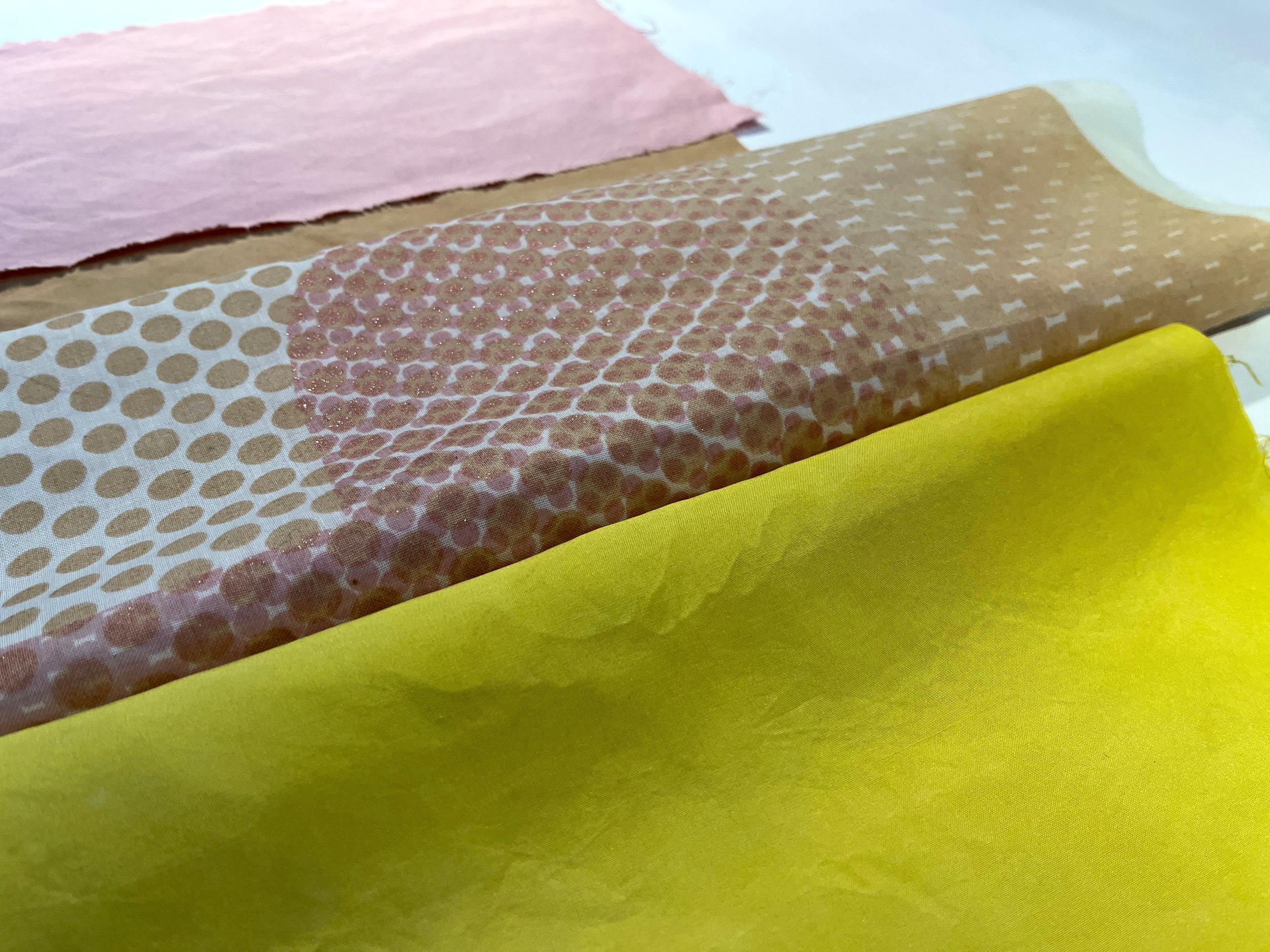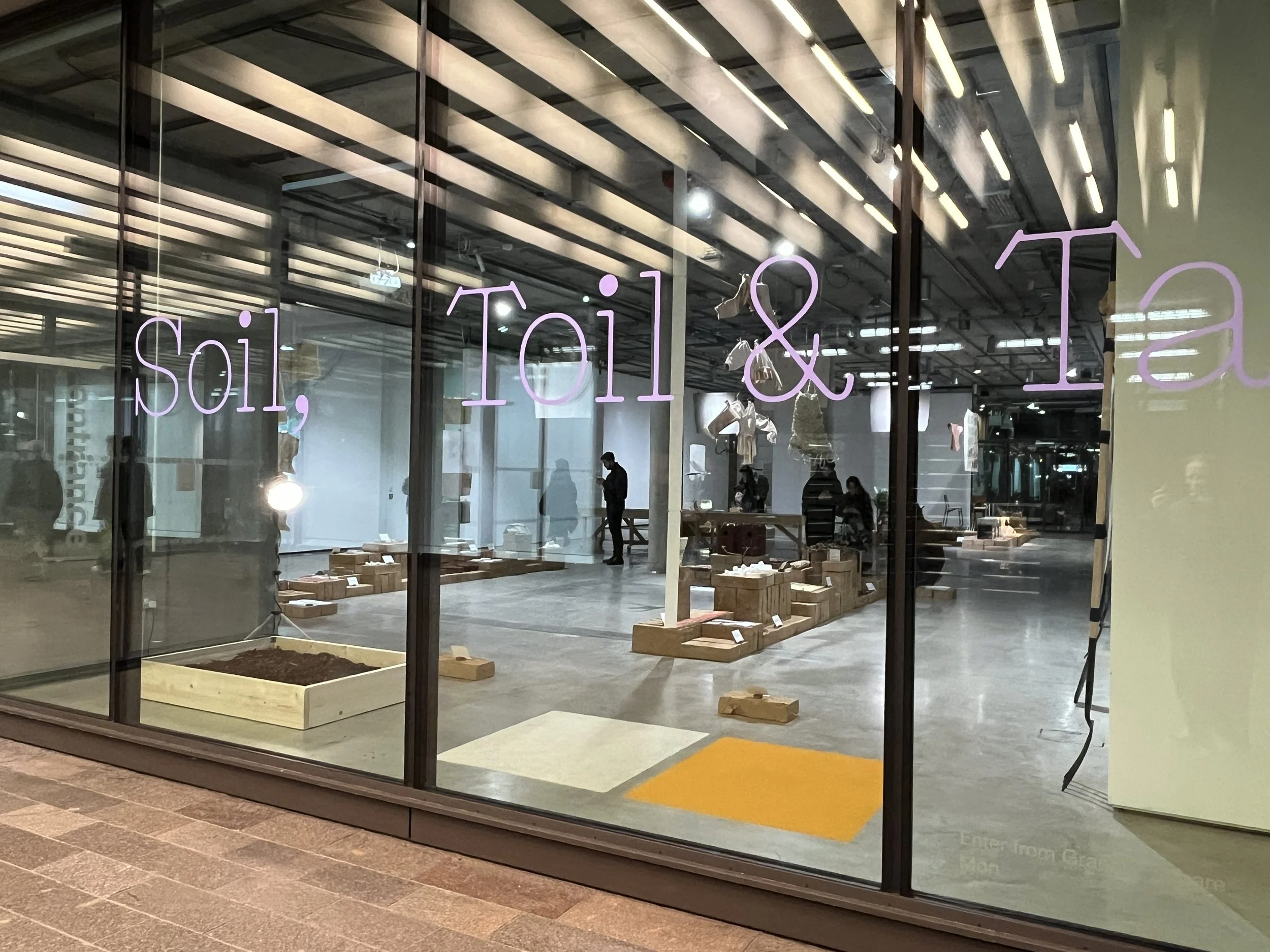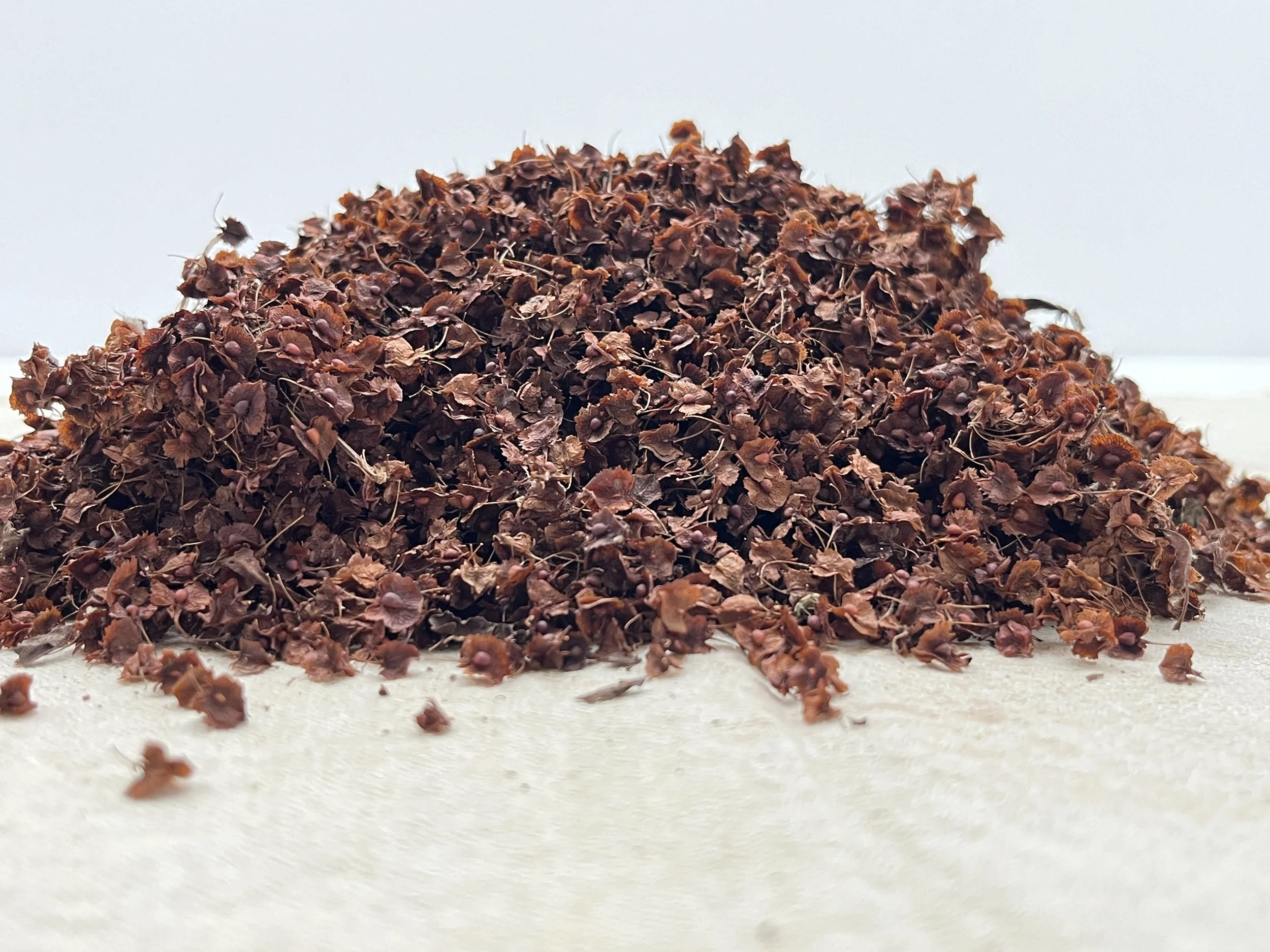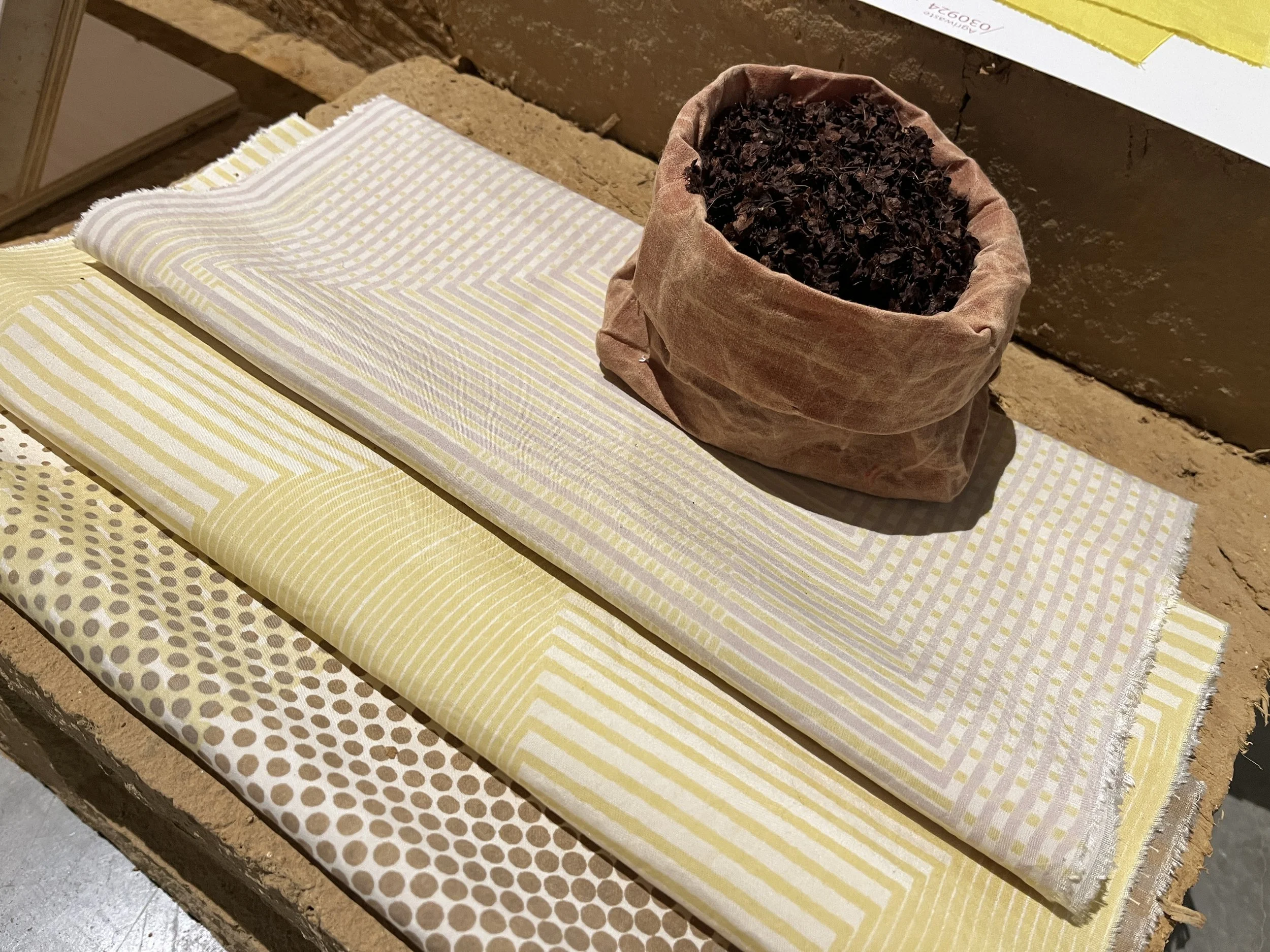
QUESTION?
Waste(d) Colour
'Colour/Matter’ advocates for low-impact approaches to print, colour and materials by developing regenerative, circular and nature-supported design methods. 'Waste(d) Colour' explores plant-based colour sourced from overlooked and redundant waste streams within agricultural food systems. From three locations in the South and East of England, each dye colour tells a unique story connected to the land, food production, and supply chains, adding value and new life to otherwise unwanted material.
A selection of works from Soil, Toil & Table, shown at Lethaby Gallery, 2025.
Exploring Plant-based Dyes through Food Waste.
Food Waste
Curly Dock
Carrot Tops
Berries
In Waste(d) we highlight issues around food production and waste within the supply chain through localised colour narratives. Each colour holds a different material narratives in relation to the land, our food production and supply chains.
Whilst not offering solutions to the inadequacies of our food systems this project highlights opportunities to utilise agricul-tural waste for both textile colouration and as a tool to increase aware-ness of how we think about food and its connection to the land which sustains us.
Colour from the seed of curly dock highlights the potential of overlooked resources of bio materials within a farming environment. Foraging and removal of invasive weeds improves soil health.
Carrot top waste from an organic grower from East Anglian Fens - highlights the potential to extract colour from parts of a plant that are discarded rather than eaten.
Colour from raspberry waste from the intensive production of soft fruit in Kent highlights the unpredictability of market demand, the sensitivity of produce to our climate, and the effects these uncertainties have on supply to.
Credits To:
Fergus Main
Lena-Marie Müller







